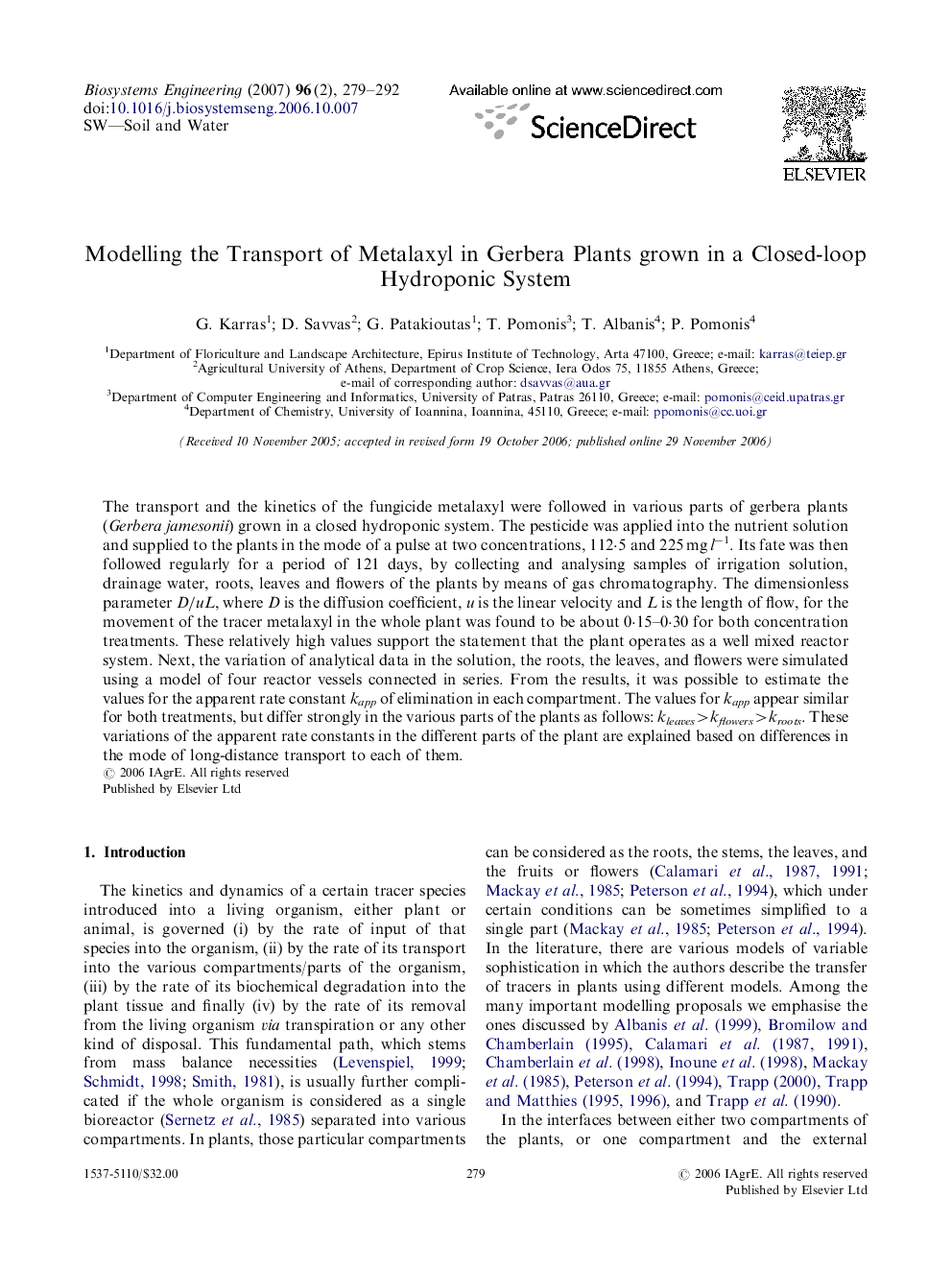| Article ID | Journal | Published Year | Pages | File Type |
|---|---|---|---|---|
| 1712533 | Biosystems Engineering | 2007 | 14 Pages |
The transport and the kinetics of the fungicide metalaxyl were followed in various parts of gerbera plants (Gerbera jamesonii) grown in a closed hydroponic system. The pesticide was applied into the nutrient solution and supplied to the plants in the mode of a pulse at two concentrations, 112·5 and 225 mg l−1. Its fate was then followed regularly for a period of 121 days, by collecting and analysing samples of irrigation solution, drainage water, roots, leaves and flowers of the plants by means of gas chromatography. The dimensionless parameter D/uL, where D is the diffusion coefficient, u is the linear velocity and L is the length of flow, for the movement of the tracer metalaxyl in the whole plant was found to be about 0·15–0·30 for both concentration treatments. These relatively high values support the statement that the plant operates as a well mixed reactor system. Next, the variation of analytical data in the solution, the roots, the leaves, and flowers were simulated using a model of four reactor vessels connected in series. From the results, it was possible to estimate the values for the apparent rate constant kapp of elimination in each compartment. The values for kapp appear similar for both treatments, but differ strongly in the various parts of the plants as follows: kleaves>kflowers>kroots. These variations of the apparent rate constants in the different parts of the plant are explained based on differences in the mode of long-distance transport to each of them.
